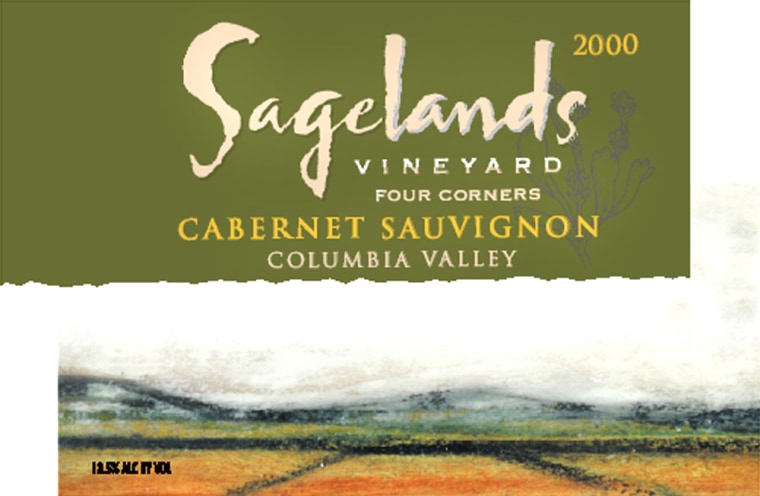The Chalone Wine Group is a big, publicly held company best known for such familiar and prestigious properties as the Acacia, Edna Valley and Chalone vineyards, among others in California. It has a share of an estate in Pauillac in Bordeaux; and it owns two wineries in Washington State, Canoe Ridge and Sagelands, which I discovered recently.
Washington, this country's second largest wine producer after California, is developing a reputation for intense and expressive reds. The Sagelands 2000 Cabernet Sauvignon, at about $15, deserves consideration for its quality and its price.
The Sagelands Vineyard is in the Columbia Valley, near Yakima, in eastern Washington's Four Corners area, and blends wine from grapes grown in each of them -- Wahluke Slope, Horse Heaven Hills, Rattlesnake Hills and the Walla Walla Valley. The area is high and dry -- largely desert, which helps produce intensity of flavor in the wines.
When I described the 2000 Cab to a friend, he asked if it was "a big, red meat kind of wine." The answer is yes. It is dominated by ripe black cherry and blackberry tastes, with notes of chocolate, a good deal of spice and herbs and not inconsiderable tannins that give it a solid feel in the mouth and suggest that it will soften a bit more over the next few years.

There is an overall quality and dimension here that belies the wine's $15 price (it can be found for even less in the Northwest) and speaks well to Washington's potential for producing very good, moderately priced reds in addition to outstanding more-expensive wines, including Cabs, Merlots and Syrahs.
Sagelands purchases its grapes from half a dozen vineyards in the Four Corners and then produces Cabernets, Merlots and a tiny bit of Sauvignon Blanc at its winery in Wapato, where the French-born Frédérique Spencer is the enthusiastic and affable winemaker.
The 2000 Cab is also a blend of another kind. It includes all five of the classic Bordeaux varieties. While Cabernet Sauvignon obviously leads the mix, at about 82 percent, there is also a generous amount of Cabernet Franc (14 percent, which provides the herbal qualities, Spencer pointed out) and smaller contributions of Merlot, Malbec and Petit Verdot.
I also opened a $9 Cabernet from Spain the other night and, while a comparison might not quite be fair, this wine was flat and generic. Sometimes, spending a little more on wine will get you a whole lot more.
Edward Deitch’s wine column appears Thursdays in MSNBC Entertainment section. Write to him at